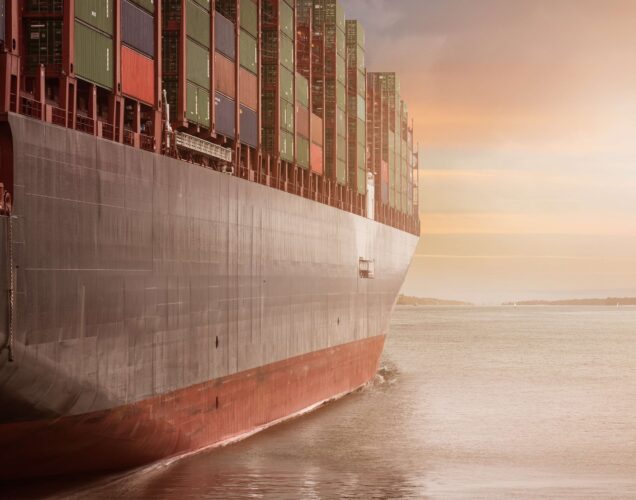The UK’s departure from the EU has increased the need for transit documentation. In this guide, we explain the Common Transit Convention (CTC) and the documents you will need to transport goods through and beyond the EU.
What is the Common Transit Convention?
The Common Transit Convention (CTC) is an EU customs procedure that allows trade to move freely between the UK, EU member states and the EFTA countries (Iceland, Norway, Liechtenstein and Switzerland), as well as Turkey, Macedonia and Serbia. Duty is paid on goods in the country of final destination.
The impact of Brexit on the CTC
As part of the Brexit trade deal, the UK will stay in the Common Transit Convention beyond the end of 2020. That means duties and other charges on goods that travel from the UK to the EU are suspended until they reach their final destination.
This is important as it simplifies cross-border trade for UK businesses exporting their goods to other CTC members. Traders will only have to make customs declarations and pay import duties when their goods arrive at their final destination. That will provide cash-flow benefits to traders and ease the flow of trade at key points of entry into the UK.
If the CTC were not in place, UK exports would be subject to EU VAT and duty (depending on their commodity codes) as soon as trailers entered the EU, for example, in Calais. To be able to make those payments, the foreign importers buying the British goods would have to have an office in France to make the VAT and duty payments. That would be both expensive and time-consuming, which is why CTC is so beneficial to UK exporters, not to mention their overseas customers.
What goods can be transported under the CTC?
Goods that can be transported under the Common Transit Convention include:
-
Goods under duty suspense
Duty may be suspended on goods that have either been made outside the UK, or in the UK but using materials from outside the UK. Such goods must be stored under the supervision of customs until the duties are paid, or the goods are moved out of the UK using transit. Goods can be stored in temporary storage for up to 90 days, or in a customs bonded warehouse.
-
Union goods
Union goods are those that are already in free circulation within the EU. They will either be made:
– in the EU from EU materials
– in the EU from materials from outside the EU, but have EU duties paid on them
– outside the EU, but with EU duties paid on them
-
Non-union goods
This applies to any good that isn’t a union good.
Check if you can use common or union transit for your goods.
What is required to move goods under the CTC?
To transport goods under the CTC and issue transit documentation, registration on the New Computerised Transit System (NCTS) is required, along with a Customs Comprehensive Guarantee (CCG). That applies to all transit movements that end in the EU or anywhere else outside of the UK. Some logistics providers, including Hemisphere Freight Services, are already registered on the NCTS system and have the required CCGs in place.
If you wish to use a logistics partner for this service, you will need to provide:
-
An EORI number
-
Your business address
-
Commercial invoice
-
Packing list
-
Your Trader Identification Number
-
Place of origin
-
Destination where the final clearance will take place
If you are established in the UK or have an authorised consignor location in the UK, you must have:
-
An EORI number starting with GB
-
A guarantee reference number that starts with GB and is registered to your GB EORI number
When you submit your transit declaration, you’ll receive a Transit Accompanying Document (TAD) that must accompany the goods and be presented at any transit office and the final destination. This form contains the Movement Reference Number in numerical and QR code form. Only once you have the TAD can the goods start their journey to the port of departure.
Different types of transit documentation – T1, T2, T2F
To make a transit declaration, you’ll need to know which status your goods have under transit. They will either be classed as T1, T2 or T2F.
The government offers detailed guidance on each status, but in summary:
T1 – applies to non-community goods (for which customs duties and other duties have not yet been paid); community goods that are subject to an EU measure involving their export to a ‘third country’; and goods in chapters 25 to 97 of the Harmonised System (HS) that are travelling to Andorra and subject to a CAP export refund.
T2 – used for community goods when they’re entering or travelling via a common transit country; travelling to or from San Marino; or are in chapters 25 to 97 of the Harmonised System and travelling to or from Andorra.
T2F – required for community goods that are travelling to, from or between the ‘special territories’ of the EU, with the exception of direct movements between the UK and Channel Islands.
Authorised consignor / consignee status
Applying for authorised consignor or consignee status will allow you to start or end the movement of goods under CTC or Union Transit for Northern Ireland at your own premises, rather than at a customs office.
As an authorised consignor, you’ll be able to declare goods and print your TAD and list of items (where applicable) at the premises of your choosing.
As an authorised consignee, you’ll be able to receive goods without having to present them or your TAD at a customs office; send your arrival notification message to customs electronically; and receive automatic permission to unload your goods (provided they’re not subject to further customs controls or inspections).
Your own premises doesn’t have to be owned or operated by you, but you will need permission to use other locations. These may include a customer’s premises, premises operated by a third-party supplier or an approved customs facility such as a bonded warehouse or temporary storage facility.
The government’s website has further guidance on authorised consignor/consignee status and how to apply.
Hemisphere’s Ipswich and London Heathrow facilities have authorised consignor/consignee status, which may come in useful when transporting your goods. Please get in touch to discuss how we can manage this on your behalf.
Transport Internationaux Routiers (TIR)
If your goods are not covered by the Common Transit Convention, an alternative option is the Transport Internationaux Routiers (TIR). It allows goods to be transported by road and cross multiple borders with a single TIR carnet (international customs document).
Your goods will be able to travel between the customs office of departure and the customs office of destination. The TIR carnet serves as an internationally-valid guarantee for the payment of the suspended duties and taxes. As well as the paper TIR carnet, a declaration must also be entered into the NCTS system.
Simplifying your customs formalities
At Hemisphere Freight Services, we’ll work closely with you to navigate customs formalities and submit declarations on your behalf. Working as your customs agent, we will draw on our team’s expertise to remove any stress and uncertainty from the process. This means you can feel confident about meeting HMRC’s requirements, while dedicating more time and attention to other areas of your business. No matter your requirements, please don’t hesitate to get in touch today.






